

1892 Viola Pelton
1896 Anna Stevenson
1897 Edna Birdsel
Jan. 1898 Myrtle E. Turner
1899 Nellie Watriis
1900 Ida B. Fuller
1902-1903 Katherine Craken
Whether Fanny Godwin, April, 1885, is a relative of Augustine Godwin, the school's namesake, is not clear. Augustine Godwin had two daughters, Edith and Grace. Two of four sisters lived in Grand Rapids, but their names are not known here.
It would be interesting to have the names of teachers between 1903 and 1924, and photographs. It's likely, of course, that some of the teachers shown below taught at Godwin well before 1929.
Godwin women teachers in 1929.

First Row - Isabel Tooley, Cecil Van Erden, Norma Barnaby, Janet Clark, Dorcas Jackokes, Marian Schmeidy.
Second Row - Ina Densmore, Garda Van Laar, Leona Kirchgessner, Jessie Thomas, Gene Hendershot, Charlotte Saur, Eva Arbing.
Third Row - Ida Wenger, Harriet Richards ( principal ), Dorothy Stocum, Neva Spencer, Dorothy Bower.
( Photograph provided by Lewis Lull, class of 1940.)
Charlotte Saur, second row, near rigtht side. Is this perhaps a sister of Charles Saur?

Margaret Brumbaugh arrived at Godwin in 1928, fresh out of the University of Inidana, and left in about 1936.
Godwin teachers in 1941. The photographs were likely taken by J. B. Ward, who documented the Godwin system for many years. Years ago for sure, many teachers at Godwin were also graduates of Godwin. One example here is Clifford Jones, who was in the Godwin class of 1928, as one can see by looking at the class photograph in section "C". Carroll Munshaw was in the class of 1929. It's likely that many others here are too; at present the class photographs from the early 1930s classes have no names associated with them, but it's likely that some of the teachers shown here are indeed in them.
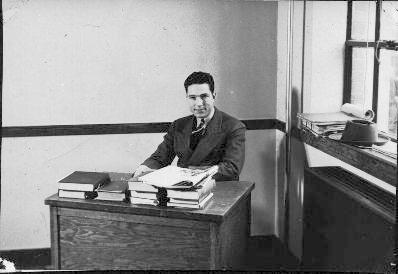
Photographs and names provided by Lee (Tanner) Collins, class of 1941.
Elizabeth (Chynoweth) Boersma has recently celebrated her
90th birthday
recently. Bill and Chy Boersma, August 18, 1990, attending a class of
1940 50th reunion.
Bill and Chy Boersma on
August 14, 1987.
( Photographs and information supplied by Louise Lull, class of 1940. )
Dorothy Dean in 1988.
( Photographs and information supplied by Louise Lull, class of 1940. )
Duard an Pauline Harbough, April, 1990.
( Photographs and information supplied by Louise Lull, class of 1940. )
Janet Clark Jones
- Florida mini reunion, Coco Beach, March 14-15, 2001.
( Possibly the wife of Clifford Jones, class of 1928. )
( Photographs and information supplied by Louise Lull, class of 1940. )
Ruth and Carroll Munshaw attending the
class of 1940 50th reunion, August 19, 1990.
( Photographs and information supplied by Louise Lull, class of 1940. )
Left click on the images below for larger versions.

|
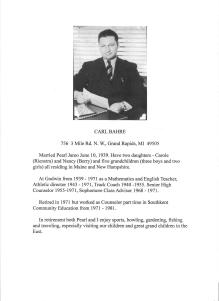
|
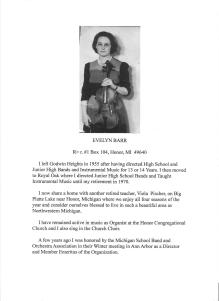
|
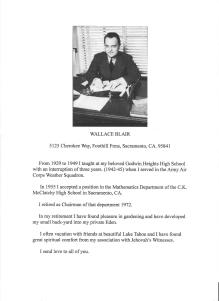
|
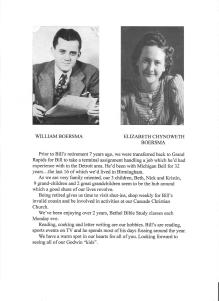
|
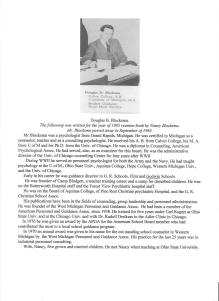
|
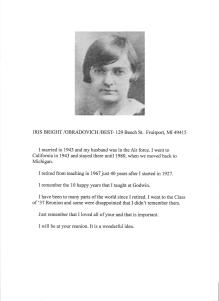
|

|
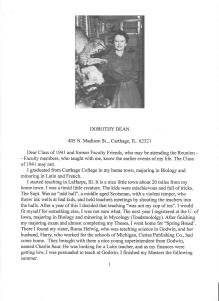
|
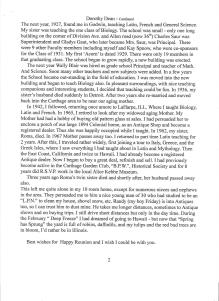
|
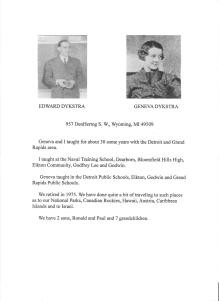
|

|
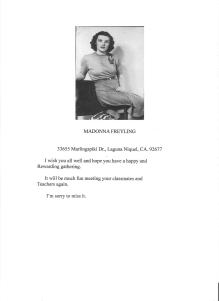
|

|
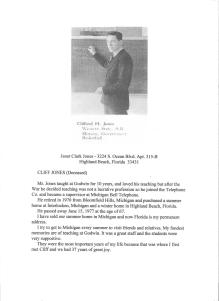
Above - class of 1928 |

|
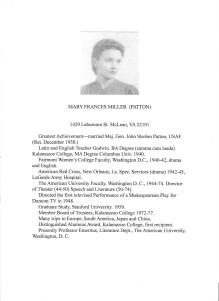
|

|

Above - class of 1929 |
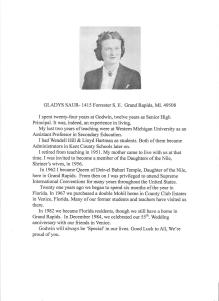
|

|

|
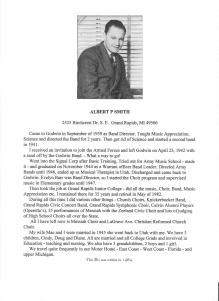
|
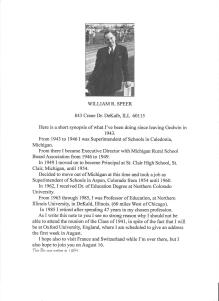
|
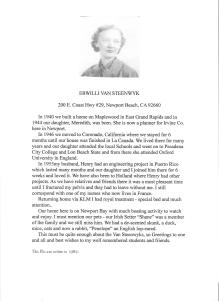
|
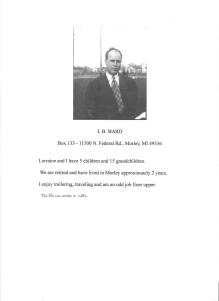
|
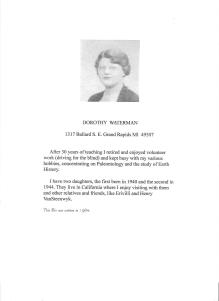
|
Left click on the image below for a larger version.
Miss Ballare and Mrs Van Stencel, May 24, 1940. Apparently at some beach. Maybe Lake Michigan for a class event.
NEA Centennial 1857 - 1957
Left click on the images below for larger versions.

|

|
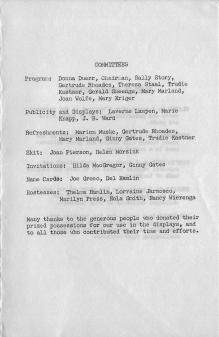
|
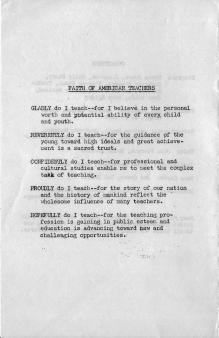
|
Teachers' Club Banquet - May 20, 1958.
Left click on the images below for larger versions.

|

|
Left click on the image below for a larger version.
Carl Baehr - June, 1959
Left click on the images below for larger versions.
Left click on the images below for larger versions.
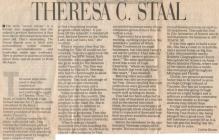
|
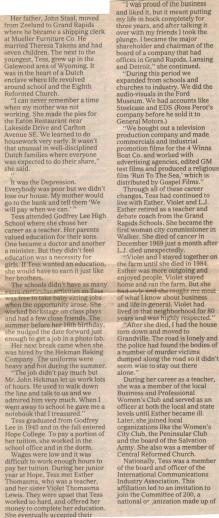
|
|
|

|
Material supplied by Bob McCarthy, class of 1953.
The bottom column goes under the left column of the image above it.
Left click on the image below for a larger version.
Photograph provided by Bob Vander Molen, class of 1960.
Ken Klump, class of 1960, and Mrs. Marland, in about 1954. Mrs. Marland was in charge of the safety program, wherein students in the sixth grade, wearing the white belt shown, provided safe crossing of roads for youngers students. She also was responsible for providing discipline to those who could not bring themselves to behave while at the crossings, and developed quite a repuation as being someone you didn't want to visit. "You're going to Marland" was a phrase that struck dread, or more, in to the hearts of many young students, and the safeties at the Division Avenue and 36th Street school had an effective club to use against unruly students. The safeties might have also had some authority on the playgrounds, which were on the west side of Division Avenue.
It's not known how crossings are handled in year 2010. Perhaps adults have to be hired for insurance reasons. The roads around Godwin were mostly less congested in the 1950s.
Left click on the image below for a larger version.
Mrs. Ringle, a 4th grade teacher, in about 1952. Why teachers specialized in a single grade is unclear, but by 1952 Godwin was big enough for this to be possible.
Left click on the images below for larger versions.

|
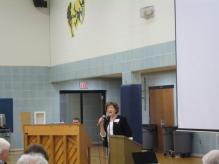
|
Ms. Lorraine Jarmosco, singing teacher at Godwin, in an undated newspaper piece, above left. At right, above, she sings at the Golden G Luncheon, September 10, 2011.
Left click on the image below for a larger version.
Hilda Mac Gregor long taught alegbra at Godwin, and was a pillar of the community in terms of giving back. She was also an accomplished Bridge player, and competed actively for years.
Slides of Mr. Murphy's class - c 1957

Material supplied by Jane Post, class of 1963.
Left click on the image below for a larger version.
Byford "Bike" Barr last lived at 1165 Griswold SE, Grand Rapids, 49507. Where the nikename "Bike" came from is unclear.
Material supplied by Lee Collins nee Tanner, class of 1941.
Left click on the image below for a larger version.
The photograph above is from the 1966 annual.
Left click on the image below for a larger version.
Winifred Klenk was a Godwin faculty member in the 1940s and 1950s.
Left click on the image below for a larger version.
Russell Koons was a chemistry teacher at Godwin in the 1950's and 1960's.
Left click on the image below for a larger version.
Left click on the images below for larger versions.

|
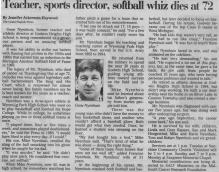
|
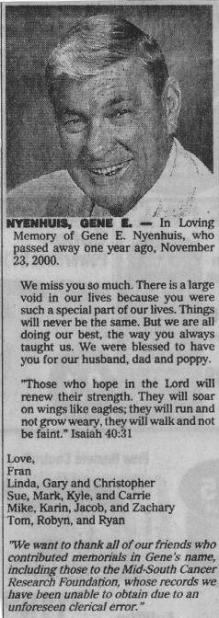
|
Left click on the image below for a larger version.
Bill Rhoades was Godwin class of 1943. This class elected to not have a class annual to save paper for the war effort. Bill Rhoades graduation photo is below the "43" in the class photograph, in section "C", class of 1943. You can also find photos of him during his Godwin years in that section.
Left click on the image below for a larger version.
Left click on the image below for a larger version.
Godwin was fortunate in having science teachers in all the important areas of science: chemistry, physics, and bilogy. Godwin produced many students able to go on after graduation to careers in medicine, science, and engineering. See section "S", "Science at Godwin", for a look at science at Godwin in the 1950s and 1960s, and the career of Dick Brockmeier, class of 1955. Wayne Stafford was an important part of Godwin's science program.

Left click on any image for a larger version

|
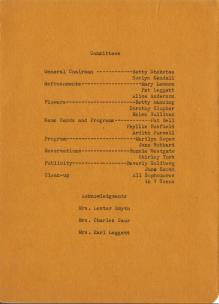
|
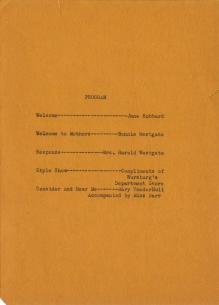
|
( Material provided by Lee Neugent, class of 1948. )

As of year 2004 the only tavern as such along Division Avenue between 28th and 44th - more or less the north-south extent of the Godwin area - is the Southland Tavern, at 3766 S. Division. There are perhaps restaurants that serve spirits, but no bars or taverns as such.
But the situation was probably different in the past. There was the Godwin Hotel, apparently somewhere on the the old Godwin property, which included much of the land between what is today 34th and 36th Streets going north and south, and from Division Avenue to the Grand Rapids and Indianna railroad track, which is now just east of the 131 expressway. Little seems to be known about the hotel now, but it was a stop along the old Grand Rapids to Kalamazoo stage coach line, and it's likely that being a hotel included a bar.
Drinking was a real problem in the past as it is today. One consequence of it was that the title of house was by law automatically held by both the man and wife for married couples. Prior to the law a drinking or otherwise unproductive husband could sell the family house without the wife's knowledge, and perhaps might do so during a bout of gambling and drinking.
In the 1930s through the 1950s there were many bars and taverns along Division Avenue, and many of those changed their names often. See section "L" for some examples. In year 2007 the bar as a stand alone institution seems to have largely faded away. Most drinking establishments are part of restaurants, and are in general eating establishments that families also eat at. It seems the stand alone bar, dark and smokey, and full of those wanting to drown their sorrows, is mostly a dated concept in the area. Perhaps television and other home entertainment has led to more drinking at home. It's highly unlikely the habit has gone away, it has simply gone somewhere else.

In pre TV America theaters were a major form of entertainment. From about 1915 to 1950, movies and radio fare occupied a great deal of people's time, year around. Eventually the radio moved into the car, and the car into the theater. Drive in theaters ( see section "D" ) first appeared in Camden, NJ, in 1933. But for the most part, people went to indoor movie theaters through at least the 1940s. Heavy on plot, and mostly thin on special effects, and more often than in black and white, movies provided a broad range of subject material. Few things in 2004 rival a double feature, complete with a newsreel, coming attractions, and perhaps a couple of cartoons.
Below is a random sample of what movie goes might experience in and around Godwin, and to some extent in Grand Rapids, a mere dime away on the Division Avenue Bus Line from about 1928 through the 1960s or so.
The 4 Star theater, located at the north end of Burton Heights, was in some ways typical of the big Grand Rapids theaters exemplified by the RKO chain theaters, in that the films shown were current, shown right after the downtown theaters had run them, and the interior was more lavish than a typical neighborhood theater, and probably on a par with the larger theaters. The 4 Star might have been built in 1938, and was therefore built about ten years after the Southlawn theater at 4000 Division Avenue.

|

|
Left click on the images below for larger versions.

March 13, 1947 |
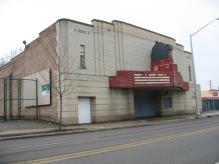
March 12, 2010 |
By 2010 the Four Star building had been some kind of latin club, but the building is now for sale again. It appears to be quite run down.
Left click on the images below for larger versions.

|
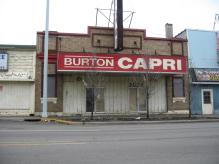
|
The ad at the left, above is from May 15, 1948, edition of the Grand Rapids Press.
An easy bus ride from stops near Godwin, the 4 Star and Burton Capri were other places to spend a cold, wintery Saturday afternoon if one didn't feel like skating at Bowen's Roller Rink. During the early 1950's the Saturday afternoon fare would include a couple of cartoons, a newsreel, coming attractions, and perhaps two grade B movies, each only about an hour long. The newsreel at that time would often be about the Korean War ( "police action" technically...) and might show some shinny new F100 swept wing "Saber Jets" flying past, at which point the audience would literally start cheering and whistling. Shades of what happened in theaters during WWII I suspect.
Southlawn.The Southlawn Theater ( see below ) went out of business in the early 1950's for some reason. Word has it that the Burton Theater has fallen on hard times (as of year 2000), and the movies it now shows reflect the general, sad deterioration of the Burton Heights area. The 4 Star is in business to this day, although its condition is as questionable as that of Burton Heights itself It might be that the drivein theaters drove the neighborhood theaters out of business. They were in some ways more suitable for those wanting privacy, or bringing large families, in which many promptly went to sleep.
Lee Neugent, Godwin class of 1948, writes:
"I'm glad that you mentioned the 4 Star theater in Burton Heights-although it has little to do with the Godwin area.
Me and a fellow named Ward Kegaries(class of '47) used to work at their Saturday afternoon Kiddie show as clowns - at least we did for a short period of time. We had tried to do some comedy sketches at GHS assemblies and Ward wanted to be a clown in the real sense. Anyway we put on some shows there until some of the kids started to pelt us with all kinds of refuse.
I believe that the 4Star was built in about 1940-we lived in Burton Heights then. It ran films on a second run basis and I continued to go there on occasion after 1950 or so. It matched the down town theaters for appointments in the theater and in the lobby. I distinctly remember seeing "Knute Rockne-All American" there
I also remember the Burton Theater just south of Burton on the east side of the street. They ran a Saturday program for $.10 complete with a feature cowboy film and a serial and handed things out like detective badges etc. Back in those days if we found a penny we would bend over and pick it up! I saw "Wizard of OZ" at the Burton
Of course with films, the big deal was the bus trip to and from downtown Grand Rapids to one of the first run houses. Edie and I had a lot of dates in those theaters. I seem to remember one theater smack in the center of downtown that specialized in news reels, travel films and cartoons-no usual Hollywood stuff at all. It was right across the street from the basnd building that housed radio station WOOD.
Good to be reminded of some of those days."
( Material provided in part by Lee Neugent, Godwin class of 1948. )

( Provided by Alta May Keiser, class of 1929 ( did not graduate ), who collected the material, Lee (Tanner) Collins, class of 1941, and Joanne Dulyea Hamilton, class of 1951, and the daughter of Alta May Keiser. )
Cynthia R. (Gross) Caldwell, class of 1956, and Tom Caldwell, class of 1953, suggest the Kent theater was on lower Monroe, near the old Wurburg's department store.
The Kent theater ad, apparently from about June 12, 1930, is from a time about three years into the sound movie era. Clara Bow was one that was able to make the transition to sound movies. Many had voices that essentially doomed them from the movie business once the silent era ended.
The "fight pictures" material is another window on the world of that time. Prmo Carnera, at 6 feet, 6 inches, was either the world champion at the time, or about to become so. Given to great puffery, and enjoying even one staring role in a movie because of his stature as a world heavyweight champion, he, and the rest of the world, only learned later that all of his fights were fixed by the mob. In fact, he had almost no ability to fight at all, but was simply large, and looked the part.
The world of 1930 was greatly entertained by things like horse racing and prize fighting, and no doubt a great deal of money changed hands over the events. And is it why they would be covered in movie newsreels.
A sad aside, what was simply the news of the day at the time, movie newsreels would now be interesting history. Few survive. They were no more likely to than today's newspapers.
The Powers Theater opened its doors for business in 1874, as the history below shows.
Left click on any item below for a larger version.

|
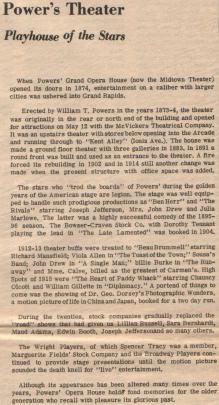
|

|
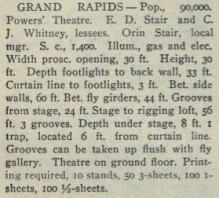
|
Material provided for scanning by Lillian Annis, class of 1941. Julius Cahn-Gus Hill Theatrical guide.
The photograph in the lower row, above, left, was taken in 1936. The layout description in the lower row, above, right, is from 1902.
A advertisement from the March 9, 1918 edition of The Grand Rapids News for the Powers Theater suggests that this was more akin to the now gone Grand Rapids Civic auditorium than a movie theater. Note at the bottom of the third item it mentions that some of the proceeds would go to children in France. WWI would not end until November 11, 1918, so there was probably a great deal of hardship in Europe in March yet.
Located on Pearl Street NE, the Powers Theater opened on May 12, 1874. The items below give some history of the theater, as well as it last activty, that of being torn down, in 1978.
Left click on any item below for a larger version.

|

|

|
Left click on the images below for larger versions.
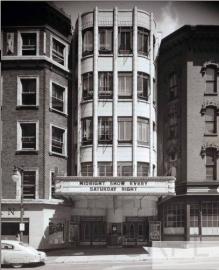
|
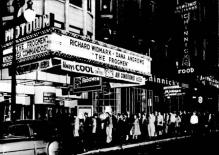
|

|

|
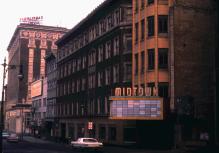
|
Material supplied by Lee Smith, class of 1953.
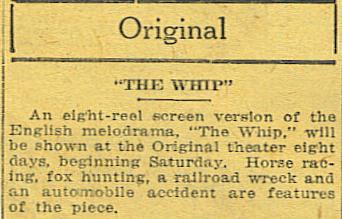
It's not clear at present where the Original Theater was located. The ad above, from March 9, 1918, is revealing for what it shows about people's interests. In 1918 yet every city and town of any size had a race track, typically a mile long. The fair grounds, later the site of the old airport by Godwin school, contained the local race track. In 1918, and perhaps for 75 or more years before that, horse racing was a major form of entertainment. Less clear, but likely, so was gambling on the horses.
Fox hunting is a rather sadistic "sport" in which costumed riders mount horses, and follow a pack of dogs while they track down a fox. If the fox manages to hide in a hole or pipe, a fox terrier, bred for the purpose, is turned loose and chases the fox out again. Finally exhausted, the fox is ripped to shreds by the dogs. The English in particular still enjoy this kind of activity. Centuries earlier, "royalty" around Europe would engage in this, and similar activities involving deer. There, clearly enough, deerhounds were used. Again, the exhausted deer would eventually be ripped to shreds by the pack of dogs, no doubt to the delight of the "royalty" for whom the event was staged. While fox hunts were held by the well to do in the eastern part of the US, many people find such activities barbaric today, and to the extent they go on today it is likely in as much secrecy as possible.
Steam locomotives wore out in 10 to 20 years, or were replaced by newer models with more desirable features. This led to routine pastime in the early 1900s wherein an event would be staged at fairs, and filmed for the movies, in which a temporary railroad track would be laid, and two locomotives sent at each other with as much speed as possible. The objective was simply to smash the two locomotives to pieces if possible. This apparently never ceased to thrill onlookers, in a day when people did not not have things like violent movies to take them minds off their boredom. Presumably the auto accident mentioned was done in a similar vein.
While it's popular to pronounce today's world as being more violent than in the past, it is more likely that the violence is simply part of human nature, and that, sadly, only the form it takes changes much over the years.
Left click on the images below for larger versions.
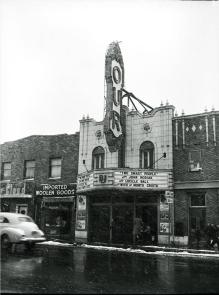
March 13, 1947 |
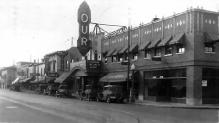
|
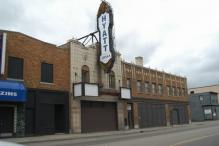
|
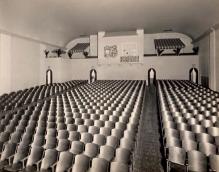
|
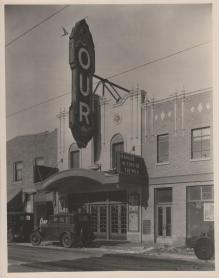
c1928 - year built. |
Apparently contests of all sorts were very popular in and around the 1930s. One could win anything from a theater pass to a carton of cigarettes. The contests were patently tailored to promote brand of establishment loyalty, and were a low level form of gambling, and provided entertainment. In a more hands on, participatory world, people were encouraged to learn company ads, songs, and other radio, magazine, and newspaper material, and once in a while turn a head full of trivia into small prize of some sort.
Jack Laubscher was in the class of 1934 or 1935. Keyes Avenue, names after the Keyes family, including Edna (Carpenter) Keyes, class of 1934, and Forrest Keyes, class of 1932. For some reason the street was later named Horton, the name it has today. The organ program no doubt refers to the pipe organ in the Our Theater. Most theaters had pipe organs in the early part of the century. They provided background sound for silent movies, although sometimes a piano was used. Apparently most pipe organs disappeared after the introduction of sound movies in 1927. Perhaps expensive to maintain, there was additional cost for the player. In 2004 even most churches no longer have pipe organs, and even if they did it's all but impossible to find someone that can play one.
Left click on the images below for larger versions.

|
Left click on the images below for larger versions.

|
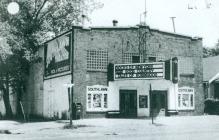
|
Above, left, Grand Rapids Press photograph, circa 1940. The photograph at the right, above, was taken in 1952, just before the Southlawn theater closed.
The movie shown on the marquee, "Trail of the Vigilantes," with Franchot Tone, was made in 1940. Assuming the movie was shown not too long after it was made, then it's possible the photo was from around that time. A western, perhaps this was a Saturday matinee.
The Southlawn theater was located at 4000 S. Division Avenue, on the southeast
corner of Janet Street and Division Avenue.
Continuing the developer's dream of the 1920's, where there would be a new
Burton Heights style area every three to five miles along Division Avenue,
Godwin Heights and then Home Acres were to follow the pattern. The
Southlawn theater was actually in a business area called Southlawn, as can be
seen on the map below in a segment from a 1955 plat map of Paris Township.
Left click on the images below for larger versions.

|

|
"Wow, talk about memories flooding back. I used to go the Southlawn theater when it cost 10 cents and you got a free candy bar, (beware of worms) or a dish. Also, we used to go to Wimpys (See Wimpy's History.) to get a foot long hotdog. The best. And who remembers the Grand Rapid Jets. Ed (Bozo) Livingston and I were bat boys for them for several years. Ah, sweet memories."
-- Ron Torngren, class of 1953, November, 2000.
Left click on either image above for a larger version.
The Southlawn movie notices below illustrate that the theater existed in 1929 already, and possibly earlier. The phenomena of neighborhood theaters, and Saturday matinees, dates to the early 1920s, and lasted into the 1940s, after which many theater owners decided that having kids trash the theaters each week was not worth the revenue it generated.
Although the source of the first annoucement is nominally from 1929, "The Jazz Singer," widely acknowledged to be the first sound movie, was released in 1927. There is some question about just when it got to the Southlawn theater, which was probably not a first run theater.

Material provided by LeRoy Rockwell, class of 1959.
The item above is from the October 20, 1933, issue of "The Godwin High School News." In year 2006 one can use imdb.com to look up the details of any of the movies mentioned above. Black Beauty was made in to a movie many times, including the 1933 version mentioned above.
Left click on either image below for a larger version.
Material provided for scanning by John Kamstra, a local collector.
The Southland Theater advertisements are from in and around 1936.
Left click on the image below for a larger version.
The Wealthy Theater, March 13, 1947. The markee says "closed for the summer, yet the snow says it's winter. Was the theater closed completely?



